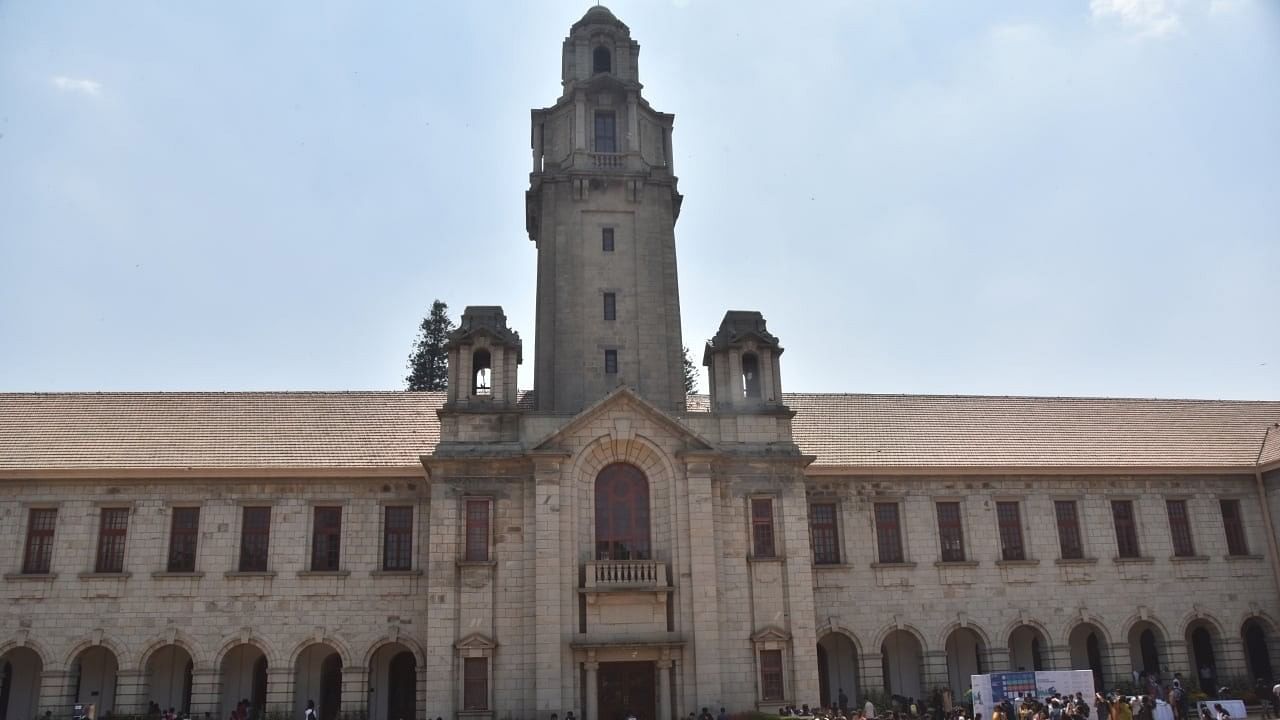
The Indian Institute of Science (IISc) Bengaluru.
Credit: Janardhan BK/DH Photo
Bengaluru: Researchers at the Indian Institute of Science (IISc) have developed a ward level flood forecasting model for Bengaluru, a tool that could come in handy for the tech hub that is regularly ravaged by monsoon rains.
The Interdisciplinary Centre for Water Research (ICWAR) of the IISc recently presented a proposal to the BBMP to adopt this system, and the BBMP is said to be actively considering it.
For the model, the IISc team, headed by Prof Pradeep P Mujumdar, is using a "digital twin" of Bengaluru using data collected from several high-resolution dynamic maps. These maps are of the city's boundaries, land terrain, stormwater drain network, buildings, and road network from both the Bruhat Bengaluru Mahanagara Palike (BBMP) and the Bangalore Development Authority (BDA).
They are also using hydrologic models, which tells them how water flows and how water resources are managed in the city, and their Numerical Weather Prediction (NWP) model to forecast rainfall.
These data sets are being integrated into the 'digital twin' to draw up the probability and proneness of an area to flood according to its topographical conditions and the amount of rainfall received, said Prof Mujumdar.
"We can use this digital twin of the city as a flood forecast and to also understand the on-ground situation in an area after a period of rainfall," he noted.
The team is now working directly with the KSNDMC, which regularly sends reports to the BBMP regarding rainfall and flood forecasts. The KSNDMC provides its rainfall and flood forecasts using data provided by Space Applications Centre (SAC), Ahmedabad.
Prof Mujumdar highlighted that the digital twin model will help researchers and civic agencies explore "what if?" scenarios for the future. He said the city will see higher rainfall intensities with greater urban growth.
Additionally, the IISc has also submitted another proposal to the BBMP through 'AquaMap' of Indian Institute of Technology, Madras (IITM).
"We want to develop the capacity, computational and communication infrastructure at BBMP so that they can take these systems forward. Our trained manpower will sit at the BBMP office to make sense of the large amounts of rainfall and flood data and eventually, we hope to transfer this entire framework to them," said Prof Mujumdar.
BBMP Chief Commissioner Tushar Giri Nath noted that this model will help the BBMP better predict flooding as it shows the "dynamic flow, velocity and volume of water".
"We can understand what areas are more prone to flooding and can take the right measures accordingly. We can map properties and, going forward, maybe we can send the residents of those areas an SMS message about potential flooding," he said.